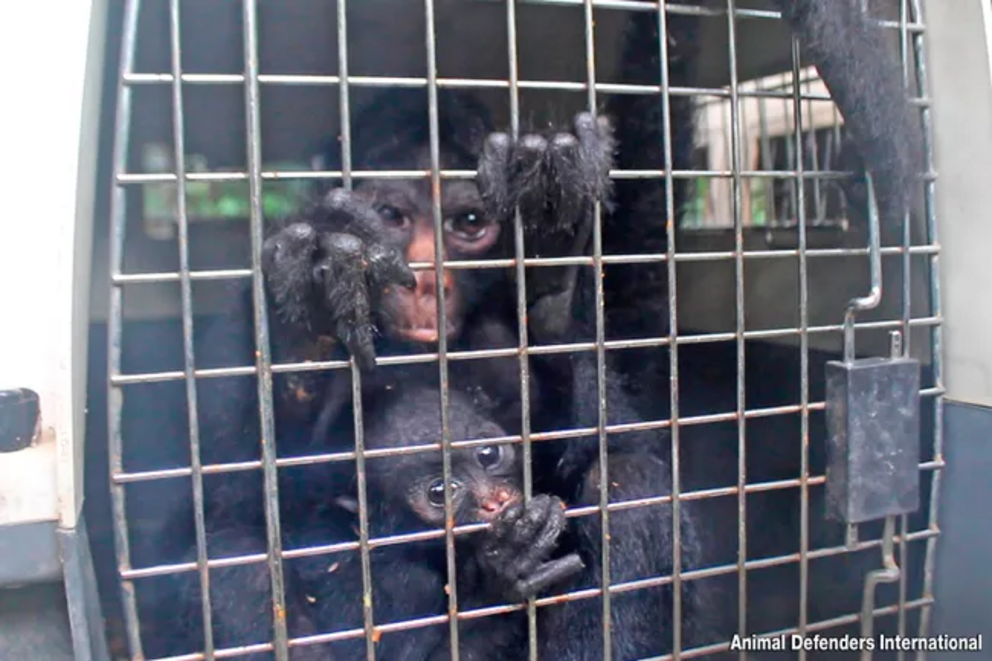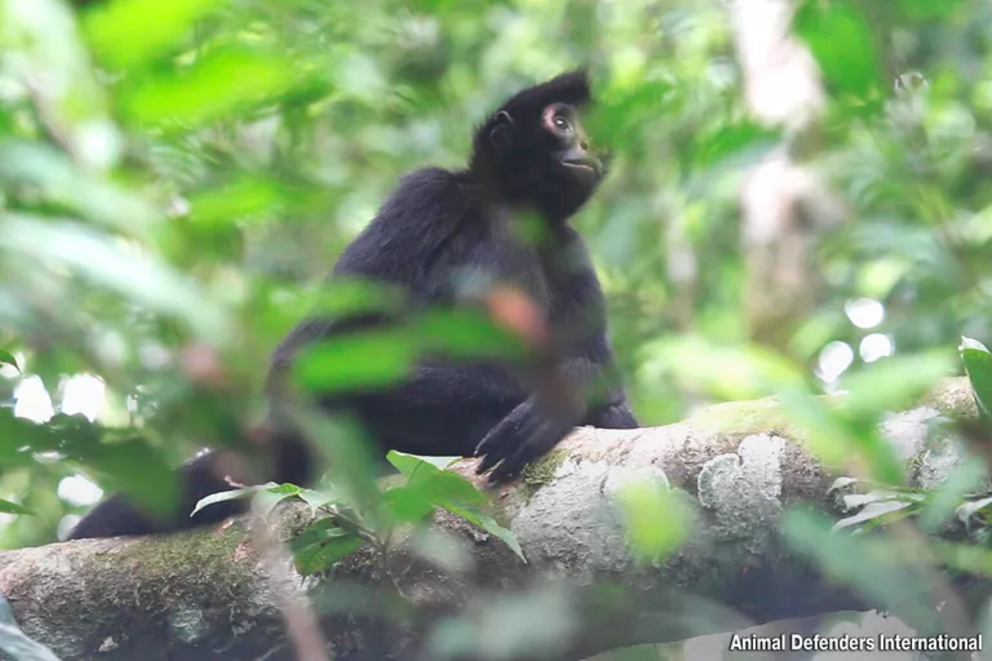Nine stolen monkeys rescued and released in the rainforest
Fact checked by Haley Mast
The animals were in an illegal zoo in Peru.
A group of nine spider monkeys was rescued from an illegal zoo in Peru and released back into the rainforest.
The spider monkeys had likely spent most, if not all, of their lives at the zoo, according to Animal Defenders International (ADI), one of the groups that helped save the monkeys. They were illegally trafficked in the wild and bred to entertain zoo visitors.1
For several years, the Taricaya Ecological Reserve had asked to take and release the animals but their requests had been denied. When leadership changed in the country, the rescue was greenlit. The reserve partnered with ADI and Peru’s Wildlife Department (SERFOR) to remove the animals.1
When rescuers arrived, they found the monkeys housed in poor conditions. They were in a small cage with broken wire mesh. Some monkeys had been injured on the wire. There was no grass, trees, or any other natural elements.1
Through the years, some monkeys had escaped or died and the facility just replaced them with more captured monkeys, reports ADI.1
Until they were removed, the rescue groups provided food and nutritional supplements to the monkeys for four or five months to help improve their health.1
Taricaya and ADI began health checks and tests in February and March to determine if the monkeys were healthy and could be released to the forest without risks. They monitored their behaviors and any changes in health while they were still at the zoo.1
All tests came back negative, the health checks were improved, and their body conditions were good, so they were approved to be released.1
The zoo fought to try to keep the babies, but authorities insisted that all the monkeys were to be released to the rescue groups.1
Trek to the Forest
On the day of the rescue, the seven adult spider monkeys and two babies were sedated and then carefully loaded into crates for the trip.2
They first traveled by vehicle from the zoo to the port. Then they rode about an hour down the Madre de Dios River in the Amazon rainforest until they reached the private reserve. Taricaya encompasses more than 1,200 acres (500 hectares) of protected rainforest and borders the Tambopata National Reserve.3 The Tambopata covers 1,061 square miles and is considered one of the most biologically diverse places in the world.45
At the reserve, volunteers and staff members unloaded the animals. They carried the crates on foot 1.5 miles (2.5 kilometers) into the jungle, wading through swamps to reach a safe, protected place to release them.1
 Spider monkey and baby waiting to be released.
Spider monkey and baby waiting to be released.
According to ADI, it was a perfect location. It’s near an area where another group of spider monkeys had also been released. They installed feeders high in the trees, so the animals can find their own food. The monkeys dined on those offerings, but also quickly have been finding more and more food on their own. Meals in the feeders will slowly be lessened until the monkeys are self-sufficient. The animals will be continually monitored for three months.1
“Most of the animals we rescue from the circus and wildlife trade cannot be returned to the wild due to the damage they have suffered, such as teeth broken off, toes cut off to prevent claws growing, or other physical or psychological damage. They are unable to care for themselves,” Jan Creamer, president of ADI, tells Treehugger.
“It is extra special when we rescue animals who can be returned to the wild, most often, primates. We are delighted that in this rescue, we had two tiny babies who will grow up and live in the wild with their families. We are honored to work with SERFOR to combat the wildlife trade in Peru, and Taricaya, to give these animals a home where they are protected.”

